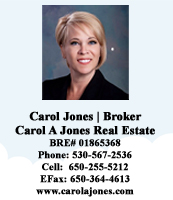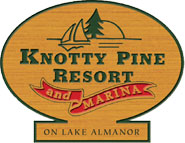
Frequently asked questions
Below are the questions we hear most frequently about Firewise USA® and wildfire safety. If your question isn’t here, feel free to contact us with your question.
What is the cause of most wildfires?
An overwhelming number of brush, grass and forest fires (between 87 and 96 percent) are caused by people, according to statistics collected by the National Interagency Fire Center (NIFC) and the National Fire Incident Reporting System.
While about 20% of all such fires are intentionally set, most human-caused fires are accidental and related to careless disposal of hot embers, ash or cigarettes.
Regardless of the cause, local fire departments in the U.S. responded to an average of 356,800 such fires annually between 2004 and 2008. See the National Fire Protection Association (NFPA) and the NIFC for more information on wildfire causes and frequency.
Why do people live in areas where wildfires threaten their homes?
There are many reasons that people live in areas where fires occur, and those reasons vary from place to place. Many people have migrated from more urban settings and may have little experience or understanding of the local fire risk. Many seek out the beauty and privacy of developments in the woods. Some enjoy the rugged outdoor lifestyle that living near nature affords.
Remember that brush, grass and forest fires can and do occur nearly everywhere in the United States.
I don’t live in a “wildland” — is my home really in danger?
The terms “wildfire” and “wildland fire” can be misleading when it comes to the chance that your home could be ignited by a fire that starts outside in brush, grass or woods.
With just the right conditions – a dry, hot, windy day – and an ignition source — a spark from a vehicle, machinery, or a carelessly tossed cigarette – your home could be in fire’s path faster than you might imagine.
See NFPA’s Brush, Grass and Forest Fires report to learn more about the frequency and locations of fires that could threaten your home.
If a fire starts, won’t the fire department put it out?
Local fire departments are the first responders, and always make their best efforts to deal with fires of any kind. But fires in brush, grass or forests pose a special challenge. First, it may take firefighters longer to find out about the fire if it starts in the woods or a field. They may not get a call until the fire is threatening homes.
Second, about 85% of our nation’s fire departments rely on volunteers. Depending on when the fire happens, it may be difficult for the volunteer departments to respond as quickly as they would like.
Third, wildfires grow in strength as they run uphill. A fire in steep and hilly terrain makes it difficult to access with a fire truck or even on foot.
Finally, if your home or neighborhood is remote from water supplies and has narrow, winding roads and driveways, it is especially challenging to fight fire at each structure. If dozens of homes in your area are threatened, chances are there are not enough firefighters, fire trucks, or water supplies to protect every home.
Ultimately, there’s no guarantee that firefighters will be able to protect your home during a wildfire. It’s your responsibility to prepare your home and private property before a fire threatens your area. Taking action now means your home or community has a better chance of reducing the damage from wildfire without additional protection.
Won’t my insurance cover damages from a wildland fire?
Assuming you are adequately insured, most homeowner policies do typically cover property losses cause by brush, grass or forest fire. However, most policies do not cover home landscaping and plants that could be destroyed in a wildland fire. And no policy can replace personal items such as photographs, artwork and other memorabilia.
The Insurance Information Institute recommends an annual insurance check-up so that you understand what is and is not covered in your homeowners insurance policy. You can also create a home inventory to help get your insurance claim settled faster in the event of fire loss. Visit the “Know Your Stuff” page for a free home inventory tool.
If I make my home safer, do I get an insurance discount?
Typically, individual improvement efforts by homeowners are not reflected in discounts to their policy premiums. Most insurance rates are set using other factors, including community fire protection resources such as the presence of fire hydrants. In addition, fire protection is only one small piece of the insurance policy, so discounts for fire protection would be fairly small if they were available.
In areas where wildfires have caused damage, you may find that your insurance company is conducting on-site inspections to recommend wildfire safety actions. Companies that incur large losses from wildfire may be less likely to continue to offer insurance in areas that they consider high-risk. See the Rocky Mountain Insurance Information Association website for more important information about insurance and wildland fires.
What are the most important things to do to protect my home?
Most homes that burn during a wildfire are ignited by embers or firebrands landing on the roof, in gutters, on or under decks and porches, or in vents or other openings in the home. Other homes burn from small flames (surface fire) that can touch the house – such as dry grass that can allow a fire to run right up to the siding. The Firewise Communities Program is a great place start and find resources and action steps you can use around your home and working your way out into the landscape.
A wildfire safety tips sheet is available on NFPA’s safety information page. You can also find additional information about how to create defensible space around your home on the Firewise website.
What is the Firewise USA® Programs?
The Firewise USA® Program encourages local solutions for safety by involving homeowners in taking individual responsibility for preparing their homes from the risk of wildfire. The program provides resources to help homeowners learn how to adapt to living with wildfire and encourages neighbors to work together to take action now to prevent losses. Initiated in 2002 with 12 pilot neighborhoods, the national Firewise USA® Recognition Program has nearly 1,000 active member communities in 40 states, as well as a participation retention rate of 80 percent over the past decade. The program, aimed at homeowners, provides specific criteria for communities regarding wildfire preparedness, and based on this criteria, offers national recognition for their work.
Why is the Firewise USA™ Program needed?
As America’s population continues to expand, much of the development to accommodate that growth has flowed into traditionally natural areas. A trend toward migration from urban centers and suburbs into formerly rural and wild areas places many more people in the path of potential wildfire. Threats to life and property from wildfires and costs for suppressing them are expanding at an astounding rate.
Since 1970, more than 10,000 homes and 20,000 other structures and facilities have been lost to severe wildland fires. Once a fire starts, there is only so much fire service professionals can do to protect structures. The Firewise USA® Program empowers individual homeowners to take an active role in protecting structures before a fire starts.
What makes a community “Firewise?”
Firewise communities are those that have taken appropriate measures to become more resistant to wildfire structural damage. An online Firewise Toolkit, including a Firewise tips checklist for homeowners, is available on the Firewise website.
Firewise techniques include minimizing the risk of home ignition by carefully landscaping around residential structures such as thinning trees and brush and choosing fire-resistant plants, selecting ignition-resistant building materials and positioning structures away from slopes.
In addition, communities that have earned the special distinction of being recognized under the Firewise USA™ Program have followed a systematic approach to organizing and implementing a Firewise mitigation plan in their neighborhood. Program criteria and additional information about the Program can be found on the Firewise website.
I want to be Firewise but how do I engage and encourage my neighbors in the process as well?
Using Firewise principles on your property will start to reduce your likelihood of damage and loss. Homes or other property within 100 feet of your home can be a risk factor if they are not Firewise. Here are some ideas to help you work with neighbors to be safer: Check the Firewise website for tips on mentoring your neighbors and starting a Firewise USA™ site in your area.
NFPA’s online wildfire catalog has free brochures, DVDs and other useful materials to share with your neighbors.
Call your local fire department or state forestry office to find out if a fire expert can come to a neighborhood meeting to discuss Firewise principles. There are also state liaisons who can help answer your questions and point you in the right direction.
Will being Firewise compromise my landscaping or the local ecosystem?
Today’s fire resistant building materials can be attractive and complement the area’s culture and style. Firewise landscaping techniques can actually improve the aesthetic quality of your home by clearing out dry and dead vegetation, and allowing space between trees and plants. More information about landscaping can be found on the “Home and Landscape” page of the Firewise website.
How can I be Firewise and keep my trees?
Preparing your property for fire does not mean removing all your trees. There are many things you can do to make your home resistant from embers or firebrands that may involve simply removing overhanging branches or limbing trees up from the ground.
Remember that healthy, well-maintained trees or forestland on your property will provide many benefits and not necessarily pose a major risk for wildfire spread. Your site-specific risk depends on the species and arrangement of the trees, as well as other factors. Consult an arborist or forester to learn more about the health of your landscape. Removing or thinning out some trees may actually be necessary to maintain the health of the rest.
My neighborhood is already Firewise, isn’t that enough?
No, being a Firewise USA® site is a great step toward improving the chances of a home’s survival from wildfire. But your home and neighborhood is just one important part of a whole community that requires protection. This means residents must look at everything at risk from including businesses, infrastructure, cultural resources and natural areas. Fire Adapted Communities, an initiative coordinated by NFPA and USDA Forest Service addresses this “whole” community approach.
What is Fire Adapted Communities and how is it different from the Firewise program?
Fire Adapted Communities is a collaborative approach to reducing wildfire risks throughout an entire community and helps connect all those who play a role in wildfire preparedness like community officials, planners or developers, residents and business owners, emergency responders, insurance representatives and land managers and public utilities, with the organizations and programs that provide resources for their (these) specific wildfire preparedness needs. NFPA’s Firewise USA® Program is a key component of the fire adapted approach and provides the framework to help residents reduce the risk of losing their homes and property to wildfire.
Our community just had a fire, isn’t it too late to become Firewise or create a fire adapted community?
No, it’s never too late. Even if your community recently experienced a fire, the recovery phase is a great time to create a plan that highlights Firewise principles you can start using around your home today. By opening up a dialogue with town officials and your local fire service, residents can also address such issues as protecting businesses, parks, utilities and other important community assets. Visit the Fire Adapted Communities website to learn more about your role in wildfire preparedness and what you can do.

Views: 223



